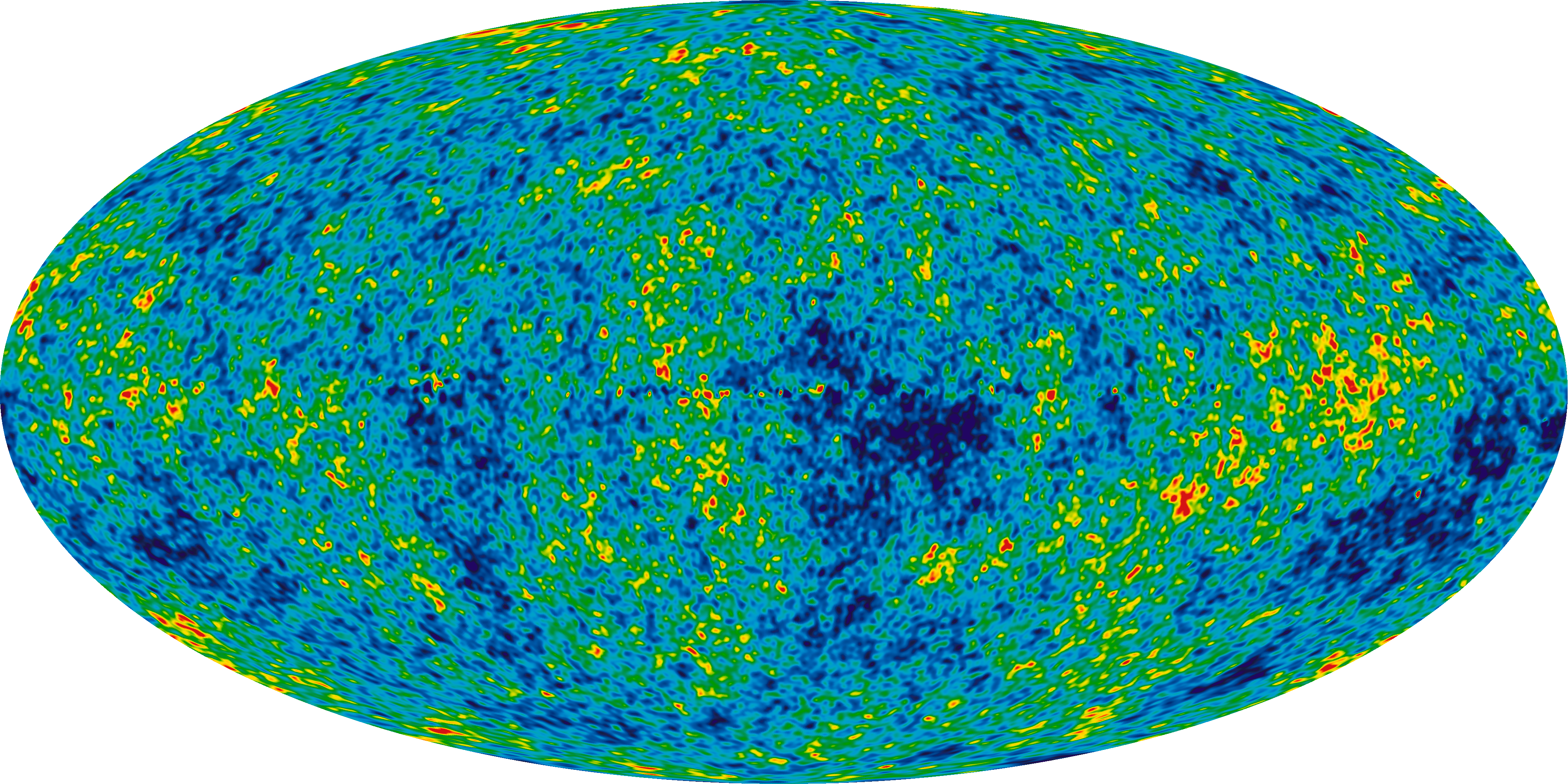
March 17, 2014, by Brigitte Nerlich
Big bang, inflation, gravitational waves: A journey through metaphorical space
Today, on Monday 17 March, scientists announced that they had found evidence for ‘inflation’ in the shape of gravitational waves (paper). In cosmology inflation refers to an exponential expansion of the universe that occurred for a fraction of a second just after the Big Bang. The link between the theory of the Big Bang, cosmic inflation and gravitational waves lies in the fact that “cosmologists believe only inflation can amplify the primordial gravitational waves into a detectable signal…”. The research programme behind this discovery is called BICEP2 and it uses a cosmic microwave background telescope situated at the South Pole in Antarctica. For those, like me, not familiar with this type of science, here is a primer and an overview.
Cosmologists, astronomers, astrophysicists and theoretical physicists are, of course exceedingly happy about this discovery, as it provides further insights into the origins of the universe and also the theory of general relativity. Here is a video of how astounded and glad one of the authors of ‘inflationary theory’, Andrei Linde, was when he heard the announcement that scientists had indeed “detected ripples in the fabric of space-time, called gravitational waves, the signature of the universe being pushed apart at its birth roughly 13.8 billion years ago”.
‘Ripples in the fabric of space-time’ (or cosmic background radiation) were not the only metaphor used for gravitational waves. When I looked at my twitter stream, a whole series of metaphors relating to the detection of this ‘elusive signal from the beginning of time’ emerged. And as I am a bit of a metaphor hunter I began to collect them. I’ll just display some of them today and analysis will have to wait for another day.
The detected signal was likened to ‘the signature’ of inflation, a signal from ‘the dawn of time’, ‘the first tremors of the Big Bang, ‘an echo of Big Bang, ‘a first glimpse of how the universe was born’, ‘the face of Big Bang’, ‘the fingerprint of inflation’, ‘light from the earliest moments of the Big Bang’, ‘swirls in the light from the early universe’, ‘eddies in cosmic background radiation’, and so on. Such metaphors make something exceedingly unfamiliar more familiar or, at least, seem more familiar. They are part of science communication.
There was, one has to admit a bit of an inflation in metaphors going on perhaps, and some use of clichés. As one expert, Marc Kamionkowski, tweeted: “Oh, ‘missing link’, ‘grand slam’, ‘smoking gun’ all used!” There was also talk of gravitational waves being primordial and even mythical.
The discovery itself was said to ‘buttresses [the] landmark theory of Big Bang’ and to open ‘a window on to a new regime of physics’ (tweet by Nathalie Binder).
And finally, to visualise things, the Royal Institution tweeted a picture of popcorn and said: “#BICEP2 has found evidence of cosmic inflation, similar to the inflation of this popcorn mmmm. http://bit.ly/1iVkypM pic.twitter.com/ds9svXQo3e”, while the BBC tried to explain inflation using a ‘sock’. Science communication in action!
There was, as one can see, celebration and verbal exuberance, but also caution. The BBC’s science correspondent Pallab Ghosh asked in a tweet whether the discovery was a “game changer or hype?”
We will have to wait and see. There is certainly still a lot of work to do, in cosmology and in metaphorology. But for the moment, there is excitement. Let’s enjoy it.
Added 22 April, 2014: For a wonderfully clear explanation of gravitational waves see this video by Valerie Jamieson (@valeriejamieson)(New Scientist features editor) – she uses using nothing but a towel, an apple and a ping-pong ball
Added 23 May, 2014: No clear evidence yet for or against
Added 8 June, 2014: Very clear discussion of the background to the background controversy by Andthenthere’sphysics here
Added 20 June, 2014: the paper is out – results and caution
Added 22 September, 2014: A problem of dust – very interesting data coming in from Planck satellite
Added 25 September, 2014: @AstroKatie on BICEP2 and Planck: http://astrokatie.blogspot.com.au/2014/09/breaking-down-big-bang-breakthrough.html
Added 28 September, 2014: very nice overview of the whole journey from excitement to … http://nautil.us/blog/scientists-excitement-over-inflation-comes-crashing-down
Added 6 December, 2014: Waiting for Planck: https://medium.com/starts-with-a-bang/the-moment-of-truth-for-bicep2-f7f5c78c5170
Added 11 February, 2014: How this ‘flop’ strengthens, not weakens science: http://theconversation.com/failure-in-real-science-is-good-and-different-from-phony-controversies-37217
Footnote: The gravitational wave project that our STS colleague Harry Collins observed, studied and experienced was based on terrestrial detection and is therefore quite different from the way the discovery today was made (thanks to Harry for pointing this out to me before I even started writing this post!) – and here he explains it all
Image: Cosmic microwave background, Wikimedia commons

There was also “holy grail”, used on the Today programme yesterday!
Here is the contribution from Mick Twister, @twitmericks:
There once was a ripple in space
That grew at incredible pace
Now close observation
Reveals this inflation
Has left an indelible trace.
Ah yes, I saw that just after I pressed publish! I bet there are quite a few more, so keep them coming.
And I really enjoyed that poem!
And here is what I have been waiting for: Jorge Cham from PhD comics explains it all!!
http://phdcomics.com/comics.php?f=1691